Installing a 360 camera system in your vehicle can provide a host of benefits, including improved visibility and enhanced security. However, the cost of adding a 360-degree camera to your car can vary widely based on several factors. It’s important to understand the components of these systems and what goes into the installation process so you can make an informed decision. Decisions like choosing between an aftermarket kit or an OEM solution can also affect your budget.

The factors influencing the cost include the type of camera system, the complexity of the installation, and whether additional features are part of the package. Integration with your car’s existing systems can introduce another layer of complexity and expense. Before you make the investment, consider your vehicle’s specifications and how the camera will be used to assist you, whether that’s for parking, security, or general driving safety.
Key Takeaways
- A 360 camera system’s cost varies based on type and installation complexity.
- Integration with existing car systems can also influence the price.
- Choose a camera based on your vehicle’s needs and the intended use.
Understanding 360-Degree Camera Systems
As you consider enhancing your vehicle’s safety and driving experience, understanding the 360-degree camera system is a crucial step. These systems provide a comprehensive view of your surroundings, making driving and parking more secure and convenient.
Technology Behind the 360-Degree Camera
360-degree camera systems in vehicles use multiple exterior cameras, typically one on each side of the vehicle, that feed into an on-board computer system. This system stitches the images together to create a bird’s-eye view of your car, which is displayed on the dashboard screen. Automakers like Ford, Nissan, and BMW have integrated this technology into their newer models, which helps you gauge your car’s position relative to obstacles around it.
Benefits of a 360-Degree Camera for Safety on the Road
A key safety feature of the 360-degree camera system is its ability to reduce blind spots. When you’re parking, for example, cameras from automakers such as Infiniti and Kia provide real-time images that can alert you to obstructions you might not otherwise see. Mercedes-Benz and Volvo go a step further, offering systems that assist with not just parking but also with navigating tight roadways and monitoring cross-traffic.
Comparison of 360-Degree Cameras Across Automakers
The quality and functionality of 360-degree cameras can vary significantly across different automakers. For instance, luxury brands like Audi and Lexus often offer more advanced features, such as high-definition imaging and wider angle views, compared to standard models from Toyota or Mazda. Moreover, premium brands such as Cadillac and Lincoln might include additional software for enhanced image processing.

Remember that while this technology is becoming more common, the availability and cost of adding a 360-degree camera system can differ, with some being exclusive to higher trim levels or more recent models from manufacturers like Subaru, Jaguar, and Land Rover.
The Cost Factors of Installing a 360 Camera
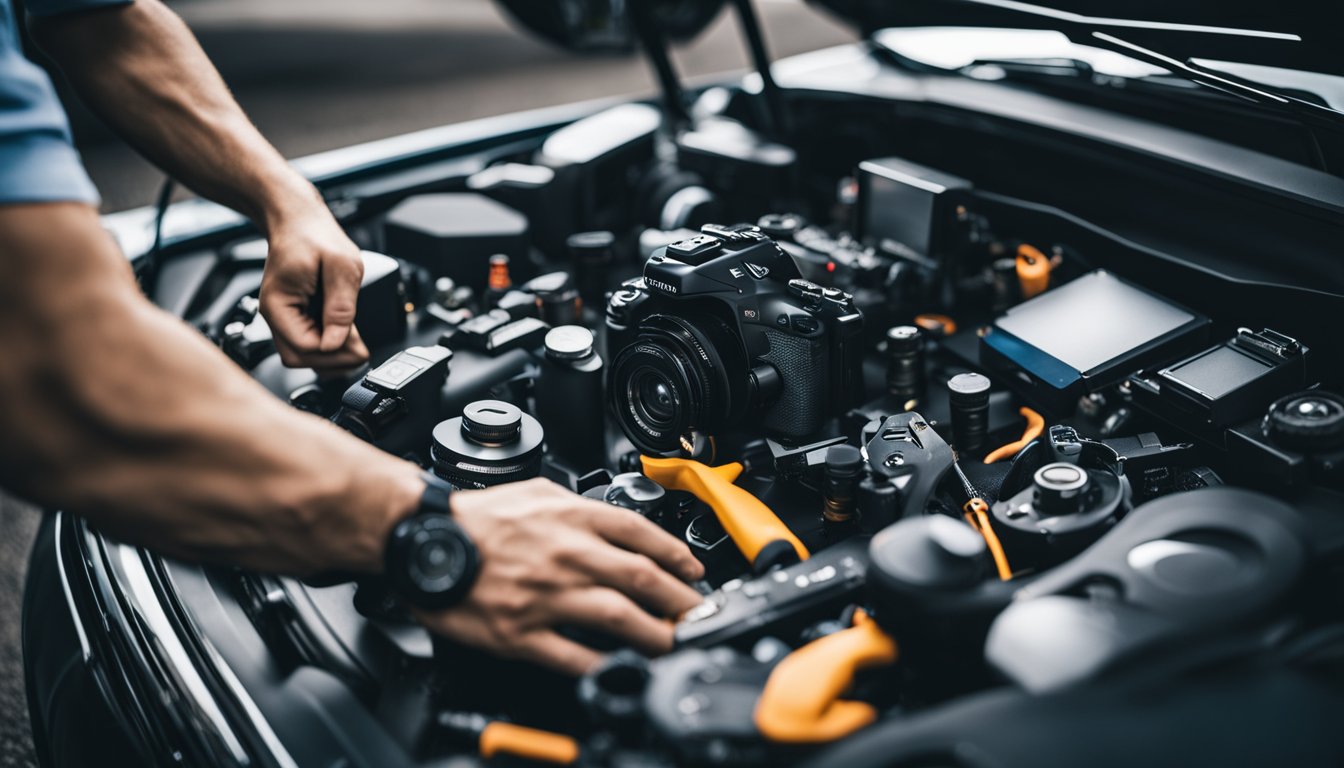
When you’re considering adding a 360-degree camera system to your car, the price can fluctuate based on several factors, including the camera system itself and the specific requirements of your vehicle.
Average Cost of 360-Degree Camera Systems
360-degree camera systems for cars come in a range of prices, and the features they include can significantly influence the cost. On average, you can expect to spend anywhere from $300 to $1,200 on the camera system alone. This price generally reflects the camera quality, resolution, and additional features like night vision or motion sensors.
Installation Costs Variability by Make and Model
The cost of installation can differ based on your car’s make and model. Some cars are prewired and have features that make them more adaptable to aftermarket installations, which can result in lower installation prices. In contrast, luxury vehicles or cars with complex electrical systems might require more work for a camera installation, pushing the cost higher. Additional charges can also arise if special brackets or wiring kits are needed to fit the specific design of your vehicle.
Selecting the Right 360 Camera for Your Car
When you’re ready to enhance your vehicle’s safety and convenience with a 360-degree camera, considering the right specifications and vehicle compatibility is crucial. This will ensure you invest in a camera that provides clear footage and fits your car perfectly.
360-Degree Camera Specifications and Clarity
Choosing a 360-degree camera with the right specifications is vital for achieving the best clarity. Look for cameras that offer high-resolution video capability, as this will determine the sharpness and detail of the footage captured. For instance, a camera that offers 5.7K resolution can provide a detailed view around your Hyundai or Kia, making it easier to spot potential obstacles. HDR (High Dynamic Range) is another feature to consider, as it improves video quality under different lighting conditions, which is especially useful for cars like BMW and Mercedes-Benz that may have a sunroof, affecting light exposure.
- Recommended specifications for clarity:
- Resolution: At least 1080p; 5.7K for enhanced detail
- HDR: For better lighting balance
- Frame Rate: 60fps for smoother footage
Compatibility with Different Car Makes
« SUVs with 360 Cameras: Top Models for Ultimate Visibility
Can You Add a 360 Camera to a Ram 1500? Upgrading Your Truck’s Vision Simplified »
Ensuring the 360-degree camera you choose is compatible with your car make and model is just as important as the camera’s specifications. Manufacturers like Ford, Audi, and Nissan might have specific electronic architecture or onboard systems that can influence the type of camera you can install. For luxury brands such as Lexus, Land Rover, and Jaguar, you may need cameras that are designed to interface seamlessly with more advanced vehicle systems.
- Checklist for compatibility:
- Electronic Integration: Ensure the camera works with your car’s electronic system.
- Mounting Options: Confirm that the camera fits the designated space in your car.
- Brand-Specific Features: Some car brands may have unique requirements or offer proprietary cameras.
To find the ideal camera, you might have to consult with your car’s dealership or a professional installer to make sure that the camera’s design and installation requirements match the specifications of your vehicle, whether you drive a Chevrolet or a Volvo.
Installation Process of a Surround View System
When you’re looking to enhance your vehicle’s safety and convenience, installing a surround view system is a great option. It provides a real-time view around your car, aiding in parking and maneuvering in tight spaces.
Preparing for Installation
Before you begin the installation process, ensure you have all necessary tools and components for your surround view system. Selecting the appropriate power source is crucial, as it will need to be connected to your car’s electrical system without interfering with other functions.
- Identify installation points for each camera: front, rear, and both side mirrors.
- Gather tools: Depending on your car model, a range of tools such as screwdrivers, drills, and cable snips may be required.
- Consider professional assistance if you’re not comfortable with automotive electrical systems.
Step-by-Step Installation Guide
Front and Rear Cameras:
- Securely mount the front and rear cameras at the designated points. Typically, these locations offer unobstructed views that capitalize on the camera’s range.
- Drill holes cautiously to fit the cameras, ensuring not to damage any vehicle components.
Side Mirrors:
- Installing a camera on or near your side mirrors involves carefully removing the mirror assemblies to integrate the cameras.
Wiring to Power Source:
- Route the cables from all cameras to the central control unit. This step requires precision to avoid tangling with existing wiring.
- Connect the cables to the power source, ensuring that they’re properly insulated and secured.
Control Unit and Monitor:
- The next step involves setting up the central control unit that processes the input from all cameras.
- Install the monitor in a position that allows easy viewing while driving without obstructing your view.
Testing:
- Once everything is installed, conduct a thorough test to ensure all cameras provide a clear and steady real-time view.
- Adjust the angles and settings until you get a seamless panoramic view around your vehicle.
Remember, it’s important to follow the manufacturer’s instructions closely during installation and consider vehicle-specific requirements. For help with installation, professional services like Best Buy’s Vehicle Camera Installation can provide assistance to ensure everything is set up correctly.
Integration with Car’s Systems
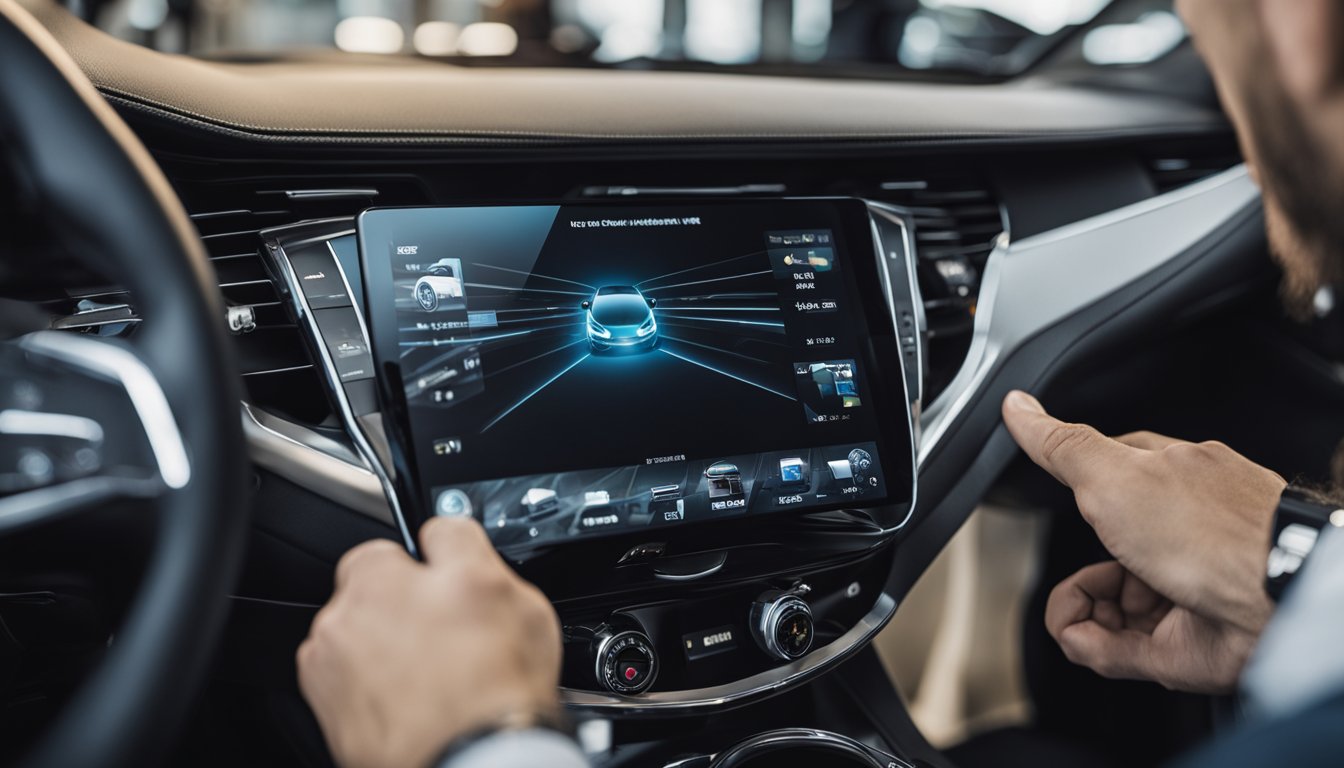
When installing a 360 car camera, integrating it seamlessly with your car’s existing systems is essential for a clean, efficient setup.
Connecting to the Infotainment Screen
To get the most out of your 360 camera, it’ll need to interface with your car’s infotainment screen. This allows you to view camera footage in real-time. The compatibility between the camera system and your infotainment unit is crucial; some systems are plug-and-play, while others may require additional adapters or interface modules for communication.
Power Source and Wiring Considerations
Your 360 camera requires a power source. You’ll usually connect to a 12V power supply, often tied to the ignition to ensure the camera is active only when the car is on. Wiring may need to be discreetly routed through your vehicle’s trim to the camera’s location, taking care not to interfere with other electronics. Proper grounding is essential to avoid electrical interference with your car’s systems.
Aftermarket Kits Vs. OEM Solutions
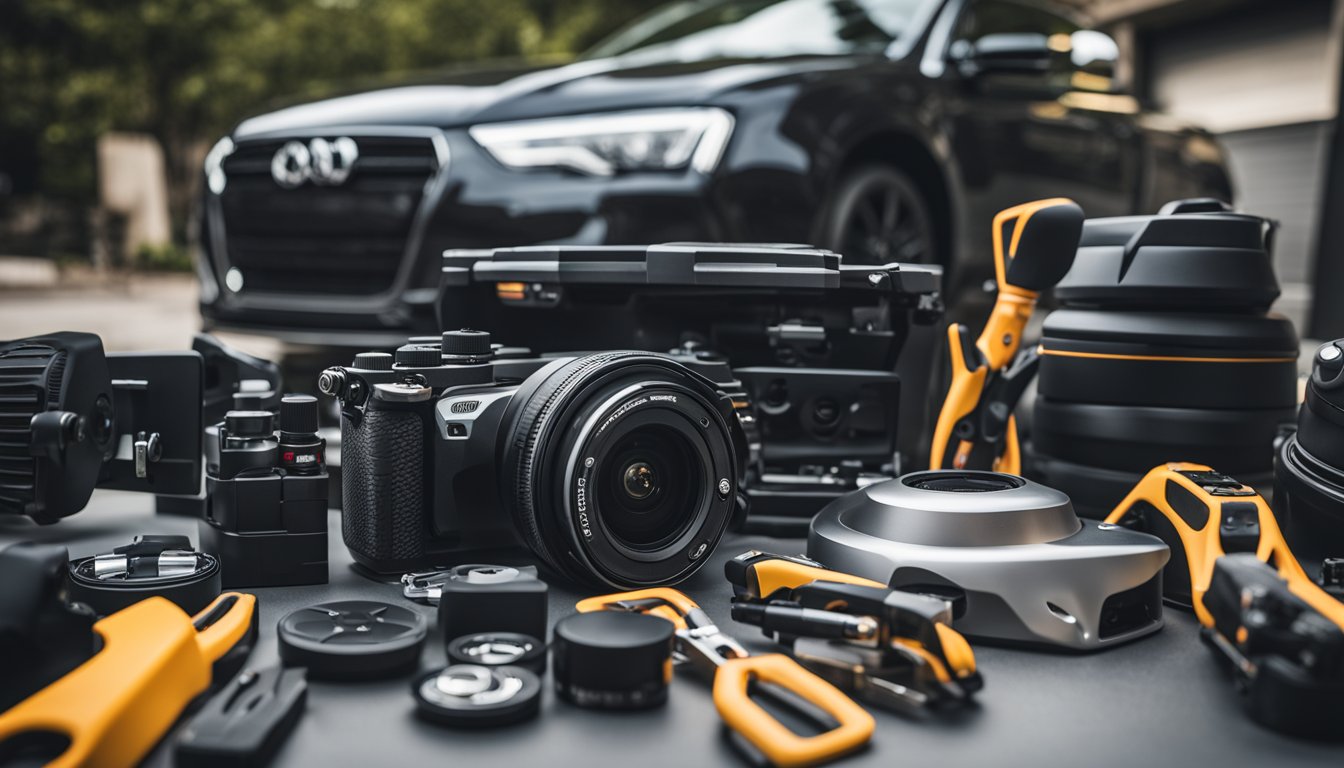
When considering upgrading your vehicle with a 360-degree camera system, you have two main routes: opting for aftermarket kits or going through the automaker for an OEM (Original Equipment Manufacturer) solution. Each path has its distinct advantages and costs to consider.
Pros and Cons of Aftermarket Kits
Pros of Aftermarket Kits:
- More Options: You can pick from a variety of brands and features.
- Cost-Effective: Generally, aftermarket kits are less expensive than OEM options, with basic kits starting from approximately $100 – $200.
Cons of Aftermarket Kits:
- Varied Quality: The quality can vary, making it crucial to choose a trusted brand.
- Installation Complexity: Professional installation may be needed, which could add to the cost.
What Automakers Offer OEM Surround-View Cameras
Automakers providing OEM solutions typically ensure that the cameras are:
- Fully Integrated: Seamlessly designed to fit and function with your vehicle’s existing systems.
- Quality Assured: They match the quality and specifications for your specific car model.
However, OEM solutions can be more costly and are often only available on newer or high-tier models. If budget is less of a concern and ensuring that the camera system fits and works as if it was factory-installed, an OEM solution might be the right choice for you.
Visibility and Parking Assistance
The introduction of a 360-degree camera to your car brings visibility and parking assistance to the forefront, ensuring you can maneuver into any parking space with confidence.
Enhanced Parking Space Detection
Your search for a spacious parking spot becomes much simpler with a 360-degree camera. Parking sensors work in tandem with the camera, offering you a bird’s-eye view of your car and the surrounding area. This complete perspective makes it easier for you to detect suitable parking spaces and understand how your car fits into them, reducing the chances of scrapes and dings.
Monitoring Surroundings for Peace of Mind
While the primary advantage of a 360-degree camera is easier parking, the extended visibility around your vehicle also contributes significantly to your peace of mind. With cameras granting you a comprehensive view, you can monitor your surroundings effectively, ensuring that every move you make while maneuvering is informed and safe. Whether you’re backing out or inching into a tight space, the real-time feed eliminates blind spots and alerts you about obstacles you might miss with mirrors alone.
Camera Maintenance and Upkeep
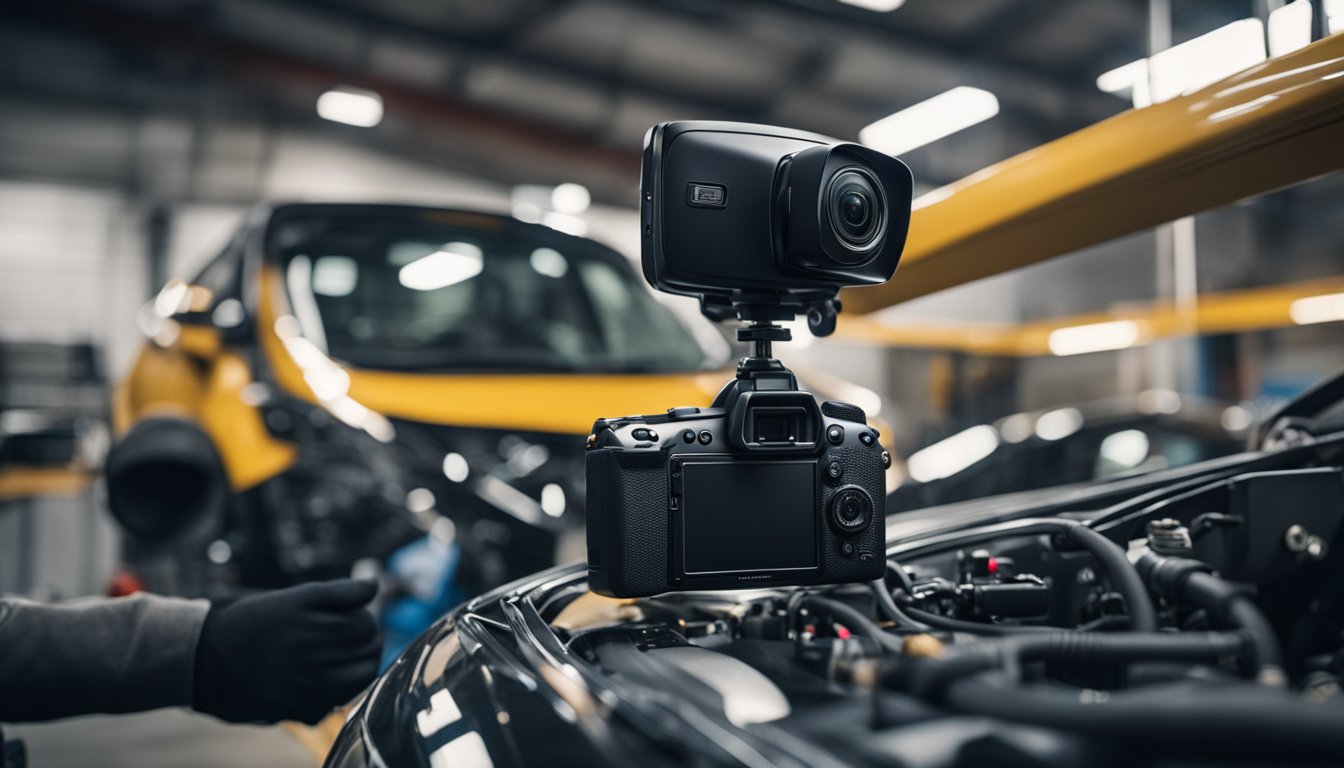
After installing your 360 camera in your car, it is essential to engage in ongoing maintenance and upkeep to ensure it continues functioning optimally.
Regular Cleaning and Care
To maintain the clarity and functionality of your 360 camera, you should regularly clean the lenses and the camera housing. Use a microfiber cloth to gently wipe the lenses, removing any dust, dirt, and smudges that can obscure the camera’s view. Check the camera’s mounting and housing for any signs of wear or damage, ensuring that it remains securely attached to your vehicle. This simple routine can prevent potential image quality degradation over time.
Troubleshooting Common Issues
If you encounter issues with your camera, such as a distorted image or connectivity problems, start by checking all cable connections and ensuring that they are securely fastened. Sometimes, the solution can be as straightforward as rebooting the system. Refer to the manufacturer’s manual for specific troubleshooting steps related to your camera model. If problems persist, contact the manufacturer or a professional technician who has experience with maintenance of car electronics.
Vehicle Considerations for Camera Installation
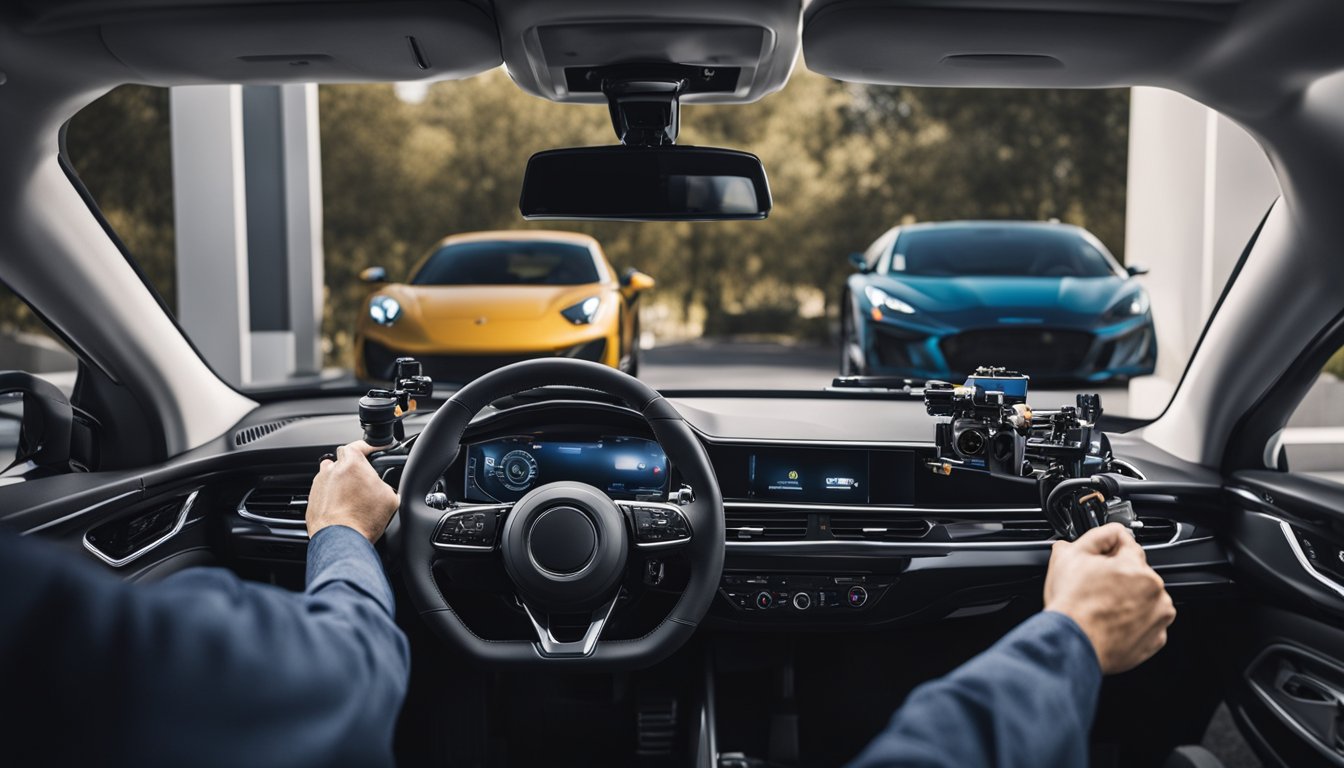
When planning to install a 360 camera on your car, the make and model play a critical role, as well as the vehicle’s exterior design. These factors determine the installation process and cost.
Exterior Design Constraints
Your car’s exterior design influences where a 360 camera system can be mounted for optimal visibility. For instance, the center of the dashboard, near the rearview mirror, is often chosen for camera placement to capture a full view of your surroundings without obstructing your field of vision. Additionally, the shape of your bumpers and the presence of spoilers or roof racks need consideration to avoid blind spots.
- Placement: Find spots unobstructed by design features like spoilers.
- Vehicle Body: Assess body curves and angles for camera angle setting.
Special Considerations for SUVs, Trucks, and Off-Road Vehicles
If you drive an SUV, truck, or an off-road vehicle like a Chevrolet truck, there are special considerations:
-
Height: These vehicles are typically taller, which may affect the camera’s view and the types of mounts needed.
-
Camera Protection: For off-road vehicles, ensure the camera is protected against elements like dirt and debris.
-
SUVs and Trucks: Check for any factory features or accessories that might limit camera placement options.
-
Off-Road Capabilities: Consider additional shielding for cameras to protect against rough terrain conditions.
Adapting the installation process to your vehicle’s specific design and use will help ensure that your 360 camera operates effectively and provides the coverage you need for a safe driving experience.
Security and Surveillance Uses for 360 Cameras
When considering enhancing your car’s security, a 360 camera can serve as a powerful tool in your security camera system. Not only does it provide a comprehensive view around your vehicle, but it also offers a real-time perspective to monitor activities.
Using 360 Cameras as a Security Camera System
A 360-degree camera installed on your car works as a proactive security measure. With a panoramic coverage, you don’t have to worry about blind spots. This type of security camera can automatically capture and save video footage before and after any movement is detected, ensuring that all angles around your vehicle are monitored.
- G-sensor technology: Ideal for accident evidence, it records moments of impact.
- Motion detection: Notifies you if there’s movement around your vehicle, even when unattended.
For instance, using a 360-degree security camera gives you 24-hour surveillance of your car, providing peace of mind that you’re well-informed about your vehicle’s surroundings.
Real-Time View for Increased Security
The real-time view feature of 360 cameras elevates your car’s security system. You can remotely access the camera’s feed from your smartphone or computer, giving you the ability to monitor your car’s surroundings live.
- _Live streaming: Watch what’s happening in real-time, no matter where you are.
- Alerts: Receive instant notifications for any detected activity.
With a camera such as the RLC-823A, you can pan and tilt to focus on any area of interest immediately, ensuring that you always have eyes on what matters most.
Making the Right Shopping Decisions
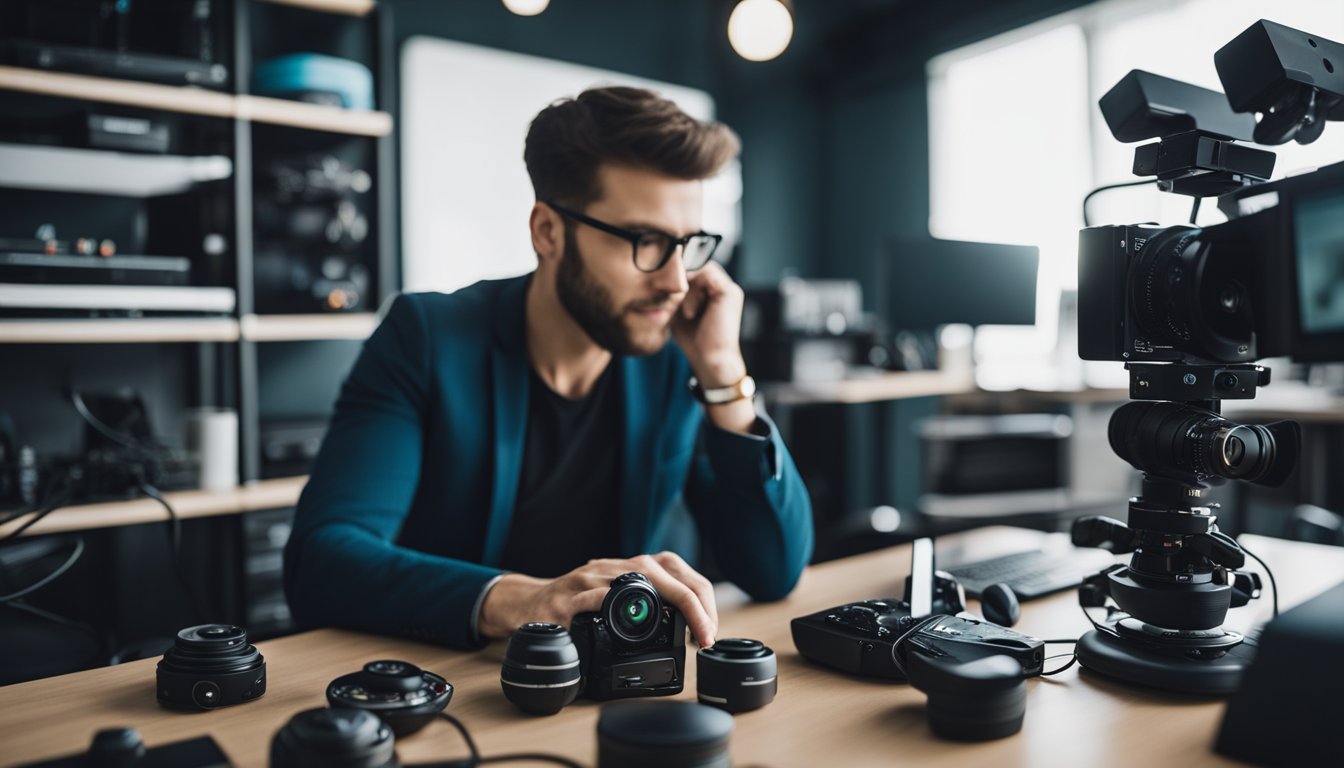
When you’re in the market for a 360-degree camera for your car, the variety of options can be overwhelming. Here’s a friendly guide to ensure you make an informed purchase.
Types of Cameras:
- Overhead View Camera: Great for a bird’s-eye view of your vehicle’s surroundings.
- Surround-View Camera: Often includes multiple cameras for a complete view around your car.
When selecting the type of camera, consider the benefits of each. Overhead view cameras are fantastic for tight parking situations, while surround-view cameras provide comprehensive coverage, which could be crucial if you navigate through busy streets often.
Camera Resolution:
A higher resolution means clearer images, but also often comes at a higher cost. Balance your need for clarity with your budget. Remember, safety and peace of mind are priceless.
Compatibility and Installation:
Not all cameras will fit all vehicles, so ensure the one you choose is compatible with your car’s make and model. You might also want to investigate the complexity of the installation process, as this can affect cost.
Consider Costs:
- Initial Purchase Price
- Installation Fee
- Maintenance Expenses
The cost of installing a 360 camera in a car can vary. On average, expect to spend anywhere from $300 to $1,200. Prices can escalate for luxury models or if additional features are incorporated.
To sum it up, your decision should hinge on finding the right balance between cost, type of camera, and your personal needs. A bit of research now can save you time and money later.
Frequently Asked Questions
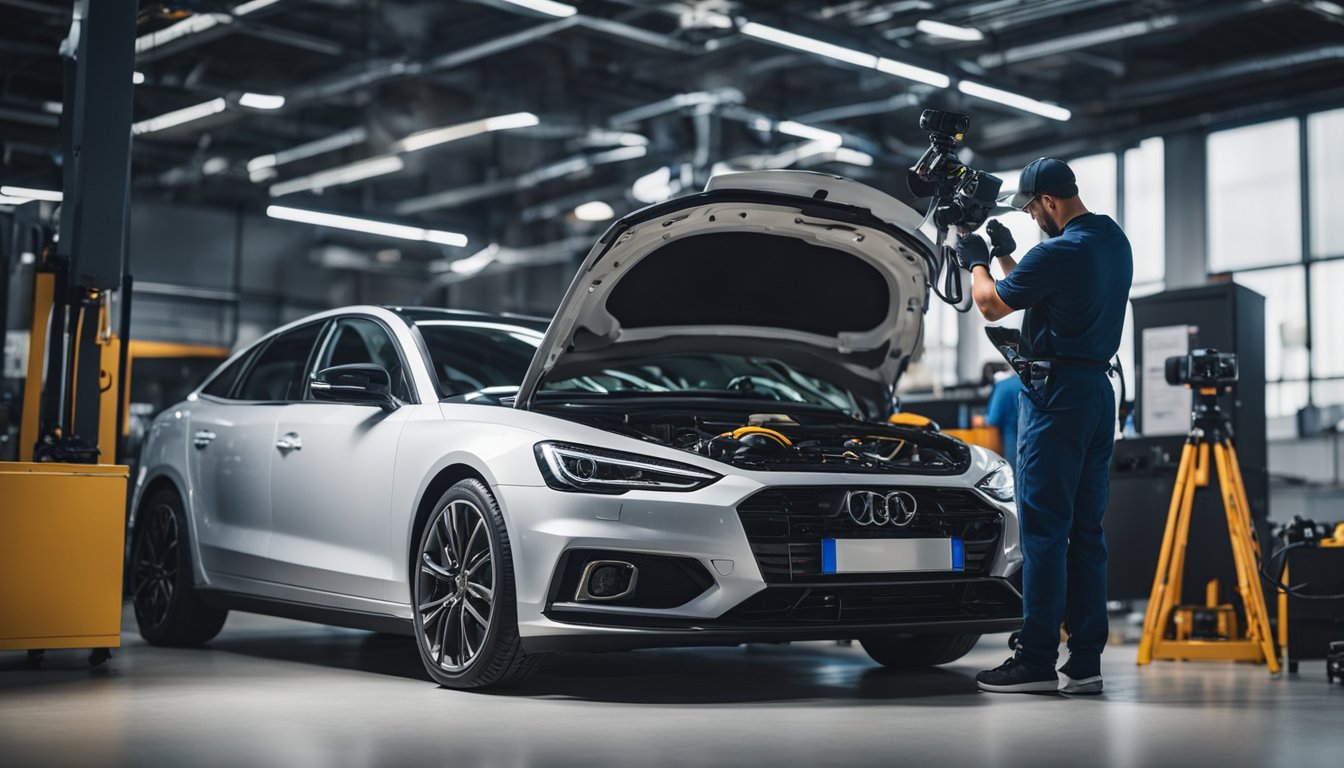
When looking into enhancing your vehicle with a 360-degree camera system, cost is a significant factor. This section addresses the pricing you can expect, the viability of retrofitting older models, and the variation in costs by vehicle type and brand.
What is the price range for installing a surround-view camera system in a vehicle?
Installing a camera system in your car, such as those providing a 360-degree view, typically ranges from $300 to $1,200. Factors influencing the price include the type of camera and the complexity of the installation process.
Can I retrofit a Birdseye view camera on my older model car, and what may that cost?
Yes, retrofitting a Birdseye view camera is possible on many older car models. The total cost often depends on the specific requirements and adaptations needed, which can be more costly than equipping a newer vehicle.
Are aftermarket 360-degree camera systems for cars affordable?
Aftermarket 360-degree camera systems can be an affordable option. They are available across a range of prices and usually cost less than factory-installed units, though prices can vary based on the system’s features and compatibility with your vehicle.
How do costs vary for adding a 360 camera to different types of vehicles, like SUVs or sedans?
The installation cost for a 360 camera can vary based on vehicle type, such as SUVs or sedans. Larger vehicles may require more sophisticated systems and thus could be more expensive.
What should I expect to pay for a 360 camera system on a used car?
The cost for adding a 360 camera system to a used car could be on the lower end of the spectrum, starting at around $100-$200. However, the price can increase with the quality and complexity of the system you choose.
Do the costs of adding a 360-degree camera to my car differ by brand, such as Toyota?
Cost can differ by the vehicle’s make, such as Toyota. Specific brands may require specialized equipment or calibration that can affect the installation price.





